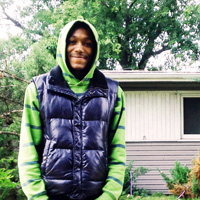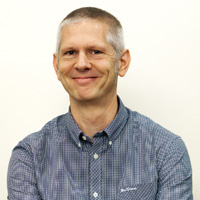Bringing back Byron
Kilbourn’s long road home
Even today, Milwaukee is a reflection of its founders. We all know about Juneau, Kilbourn and Walker, and their names are embedded all over town. But, perhaps surprisingly, one of them spent nearly 130 years away.
Byron Kilbourn, founder of the settlement on the west side of the Milwaukee River that became known as Kilbourntown — and is now called Westown — died in Florida in 1870 and was buried on a cemetery in Jacksonville, a city to which he also lured other well-known Milwaukeeans, including Alexander Mitchell.
These days, however, Kilbourn rests in peace at Forest Home Cemetery on Milwaukee’s South Side, thanks largely to the efforts of one man, Frank Matusinec.

In the 1990s, Matusinec — a volunteer at Historic Milwaukee Inc. — got the idea to bring Kilbourn’s remains back to Milwaukee, and in 1998, he put his money where his mouth was and flew to Florida, rented a van and, on a journey worthy of an indie film screenplay, drove a coffin with a 128-year-old corpse back to Milwaukee.
Here’s Matusinec’s story in his own words:
The idea
I’ve always been a history buff. I still am a volunteer at Historic Milwaukee. There was a new book came out by Gordon Bergquist. There had been a lot on Kilbourn, who was not a favorite person in many ways. He certainly was aggressive, but that got the city going. He didn’t have (a very good reputation).
Yeah, (a) whatever it takes, "let’s get it done," (kind of guy). When Gordon talked at the Historical Society about his new book, I went to the lecture, while I was still working. I said to my wife, "By God, you know, he should really be brought back," because Walker is here and Juneau is here. His daughter is here.
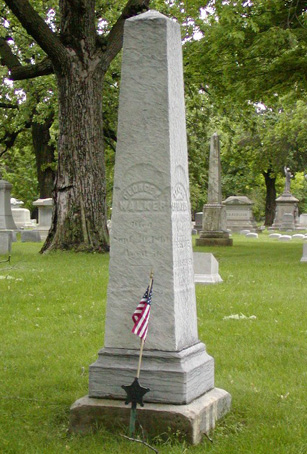
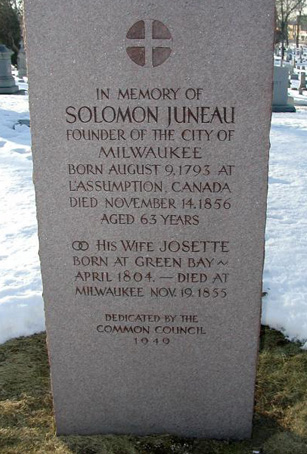
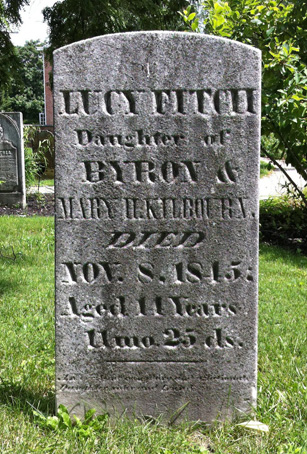
I still don’t know why the family never brought (him back) … I guess one of the relatives said that they had talked about it but never did anything about it.
Certainly it wasn’t because they didn’t have the money because they were fairly well off. His son was a practicing doctor. He stayed here. His son had, he and his wife, had twin daughters. They had twin daughters. None of them had any children. There’s no direct descendant.
Then I mentioned it to Sandy Ackerman, who was head of the Historic Milwaukee. I said, "Sandy, we should be class project." And she said, "Yes, Frank, why don’t you do that?" It’s the old thing, don’t bring it up, don’t volunteer because (you’ll have to do it). (Laughs)
I was still working, and I couldn’t really schedule it in. I thought, "Well," I thought, "It’s not going to happen but I’ll go through the motions (and see)." She thought after I retired — I was to be retired in a couple years — I’d do it. I said to myself, "You really don’t have the time now to fool around with something like that."
Then I retired and, it was in the back of my mind, and so I contacted the (Old City) cemetery in Jacksonville. I called the Historical Society there because I guess they were in control of this; it’s an old cemetery, 1832. Part of it is set aside for Confederate vets. They said, "Well, just come in, we’ll see if we need him. If he’s historically important." Later, she said, "No, you can have him."

In a sense, he was (historically important to Jacksonville). He went down there and built … you know, in those days they built right on the downtown river. Mitchell builds himself a big deal right beside him. The Villa Alexandria he called it. A flood came along and took the whole thing away. I think it was before the 1900s.
I thought, "You know I’m going to go here and get this stamp, I’ll go across the hall and get this, it’s going to take me a day just to get all the permit for the release of the body to somebody nobody knows?" There were no direct descendants. After 100 years, I guess it’s a public body.
Bringing him home
We needed a funeral home to be involved. You can’t just go in there and dig them up. I called Brett Funeral Home, and I asked them if they would transport remains. They said, "Sure, as long as it’s wrapped properly and all this and that. No problem and we’ll get him out and then pick him up at Mitchell Field." We were expecting something that would fit in a bag.
When I finally started making the arrangements, what had happened … I’m kind of jumping here. Brett offered to do it. He was reluctant at first to get involved. Then he said, "I’ll handle the arrangements." He had somebody down there (in Florida that could help on that end). He knew this guy for him, and he said, "He owes me one," They did it for nothing. No charge.
(Now) we’ve got to start making arrangements to move him. They were getting anxious about in Florida, I was down there I think early November. Sandy said, "Why don’t we wait until after the New Year’s?"
I called Northwest (Airlines) in the meantime, because I said, "Well, okay, but I’ve got time now, who knows what I’ll be doing (later). Let’s do it and get it over with."
Brett calls us. He’s got a service at the cathedral and his phone went off and it’s those guys in Florida saying, "We’re at the cemetery and we started to dig but we’re hitting something. We don’t know what it is, it sounds metal-y. It can’t be a rock."

He said, "Well, dig it up. See what it is." It turns out it’s a cast iron coffin, in good shape for 128 years. Well, now I’ve got a problem; it weighs half a ton. I called Northwest back, and I knew they couldn’t handle putting a thousand pounds (on a plane). He said, "No, I’m sorry, we can’t handle something like that."
I said, "I know I understand." Then I realized, I thought, "Well, Schneider (Transportation) goes to all over the country." I call Schneider, "Sure, sure, we go down there every day. Yep, yep. What is it?"
I said, "It’s a container about six feet long and maybe two feet wide, three feet wide, I don’t really know how to describe it."
"Oh yeah, that’s no problem. What’s it made out of? What are you doing? What’s in it?"
I said, "It’s made out of cast iron."
"Oh," he said, "What’s in it?"
I said, "Well, the remains of somebody who’s 128 years gone."
"Oh, just a minute, I need to check with somebody." He came back, "No, I’m sorry; we don’t handle anything like that."
I thought well, I could see where it’s going, so I called United Parcel. "This is your order number. This is … By the way what’s in it?"
I said, "What it is, it’s a cast iron coffin with the remains in it."
"Hold just a minute." Comes back on the phone, he says, "I’m sorry we can’t handle anything like that because we don’t handle anything we can’t replace."
No arguing with that one.
So, I’ve got to do it. Brett had a young assistant, who said, "I’ll go down there, Frank." (But) I said, "Well I’ll pay for the whole thing anyway." No one’s going to come up with the funds for it. Okay, but I thought, "No, bouncing that thing around, I’m the one who’s responsible for it and if something’s going to happen I want to be there with it. I don’t want to go with anybody." My wife certainly wasn’t going to go with me.
I fly to Florida, rent the U-Haul. (Not the big box truck), which is what they wanted me to take, because that’s the kind everybody takes. I said, "No, I won’t drive anything like that." There’s road construction, and I can see myself going down the road knocking down all these orange cones" I said, "I’ll just rent panel." Yeah, it had a box (on the back). I guess you didn’t need a truck driver’s license to operate it.
They dug (up the coffin), and I didn’t see them do it at the cemetery, but they had to be very careful because they realized as they were starting to lift it up that the lower right corner had started to rust out. They were afraid that it would give way. They got it up, and they moved it to their location (the funeral home).
It was a week long scenario, 10 days or something, and we didn’t move fast enough for it, but it was going to get hot down there and it started to cook now that it was out of the ground.
Got down there, I hadn’t eaten anything since breakfast at 6 a.m. but I wanted to get there. The timing was better to fly to Orlando and drive to Jacksonville. I got off the plane, and they said, "Oh we don’t have a panel, a truck. The only one we got has a cracked windshield." I said, "They knew I was coming 10 days ago." "Yeah but, yeah but, yeah but, yeah but … " You know.
I said, "I’ll drive it with the cracked windshield." I said, "I’m not taking one of those trucks. I’m not going to do that."
The advantage would have been that this coffin is off by itself in the back. But you know a van. You’re right there with it. I took it over, went to the funeral home, he’s finishing up a service. They got the crew together. "Who’s that?" "It’s the guy!" "Oh Jesus, finally we can get rid of this stinking thing!" They brought it out, and they said, "We’ve got to wrap it up in a big blue plastic tarp."

Got this tarp on and this one guy’s got a can and he’s going around, putting it all over the place on this thing. He threw the can on the ground and I kicked it and I looked at it and it had poison on it. It’s a preservative they use it all the time, and it’s an odor killer.
Six guys actually could lift this thing. The director, he got on it, too. I didn’t do it because I pulled my muscle in my back a couple weeks before this. This one guy said, "Too bad you couldn’t get a different kind of truck because you’re going to drive this thing how many miles?"
They said, "There’s a tombstone there, a four- or five-foot obelisk. Do you want that, too?"
I said, "Well I might as well take a look." It’s part of the deal. Eight-plot lot, and he was the only one on it. We drove to the cemetery, and all the guys got out again, moved it in and I took off. It went really very fast. I landed at Orlando I think at 11, got there at 1, and I was out of there by I think 2:30.
Milwaukee or bust
I stopped for lunch. Then I start to drive, getting up to speed this tarp starts to flap, I had the windows open. All this powder is puffing around the cabin and I’m inhaling this. It’s burning my nose and my lungs, and I thought "Jesus, is this the way I’m going to go? Hauling a body from Florida?"
I was up at 4:30 in the morning, so I was getting tired and I was still hungry. I was in Smyrna, just northwest of Atlanta and it got cold, and I only had a windbreaker on. It’s 40 degrees. I saw a sign, Knight’s Inn or whatever; there was one of those Waffle Houses.
I thought I could eat there. First, I went to the motel to be sure I would have a room. I walked in, and this kid’s looking at me. I said, "You got a room for the night? I just want it for one night." He’s looking at me. "Just a minute." He goes in the office. Some guy sticks his head out of the door, and the kid comes back out. He says, "We don’t have any room."
I said, "Okay." Then there was something else across the street. I was just so damn hungry I went to the Waffle House, and walking up to the Waffle House, and I get my reflection in the door, and from driving with the windows open, my hair was just kind of standing up. I’m looking like a first-class idiot.
Everybody’s looking, turning around looking at me. Nothing’s happening and people, all kinds of people at 9 at night, standing waiting there, what? The waitress said, "Yeah, just sit down at that counter." I sat at the counter, there’s the grill. The short order cook, he’s pissed off at the world. He was supposed to be relieved at 8:30, his relief wasn’t there and he’s got to clean the grill, and he’s cussing, nobody’s getting fed.

I said, "Well what could I have?" She goes, "Well, we got pie. Chocolate pie." Well, you know what commercial chocolate pie tastes like. But it was food. Then I went to this other motel that was across the street, then I saw the reason why after I saw my reflection, so I combed my hair and there was no problem.
The next morning, I’m getting ready to leave, there’s a woman with two young kids parked next to me, and I had left the window cracked open because I thought, "God, in the morning, and if the sun is out, this is going to be bad." You could smell it. She’s looking at me. I said, "Morning." The kids are "Hi!" She couldn’t get out of there fast enough. Because she could smell it. You could see the expression on her face.
I walk around the van and the right rear tire needs air. Well, that’s not too bad. I filled it up. We got it up to (Tennessee) and I thought, it was only 10 o’clock, "I’m going to get home today."
In Tennessee, I heard a noise, and I thought, "Oh no, it’s something." It blew.
It’s Saturday morning. Of course they don’t give you a spare with any of their vehicles. I didn’t know that. I called up. "We’ll send somebody right out. Okay, where are you?" He says, "Well, it’s going to be a couple hours."
I walked back from the filling station to the van, three people stopped to see if they could give me a lift. Then, on the way back on the walk back on the other side of the road, a couple more. I couldn’t get over it. I went back to the station a little later, and I had one of those little hot dogs that they make. I happened to look up, it happened to be the guy, and he was driving up, and he’s not getting out of, he’s in a pickup. It has tire repair on it. He’s not stopping. He’s looking, just kind of coasting through. I went out and yelled for him.

We get there … He didn’t even get into that. He’s just looking at me. Got there, put the tire on. "Oh thanks, goodbye."
I think he might have been afraid to (ask why it was so hard to jack up the van). I get going, start, get up to 30 miles per hour, and the thing is shimmying all over the place. I go to the next town, which is Clarksville. By this time, well, it was the same thing. I had to wait. Finally around 6 p.m., somebody in a white shirt and black trousers, looks like he’s going out to eat, came in and said, "Are you so and so? Yeah. Okay. Tell you what," he says, "I can’t do anything here, so just follow me." He was in his mid-50s. "I got to take it back to the shop."
The tire the needed to be balanced. It was out of alignment. It was just some old beat up thing. The tire was nuts. We switched tires. He put a good tire on. He didn’t question (the smell or the weight) either.
Byron Kilbourn, Bernard Isaac Durward, Oil on canvas, 1847
Gift of Charles Evans Kilbourne, III Museum of Wisconsin Art Collection
You could see the guy’s going out to eat or he’s going to a party. He said, "I’ll tell you what …" The highway was maybe five minutes away. He says, "I’m going to wait here for 20 minutes. You call me within 20 minutes if you’ve got a problem, otherwise I know it’s going to go over 30 miles per hour." It did.
I wind up in Paducah, Kentucky, found this nice restaurant that specialized in big spaghetti and all this and that, oh it looks good and I said, "I’ll have a glass of wine." He said, "You’re two blocks away from a glass of wine, this is a dry town." Okay.
Got a good start the next morning. Was up at 6. Bright, sunny morning. Crossed the Ohio, beautiful scene. I’ve always wanted to go to Vandalia, Illinois. Vandalia is right almost on the way. I thought, "If I hit there right, I might be able to go to church." I did, I caught in, I caught mass. They’re redoing the church, and it’s all in the auditorium.
(The priest) starts he’s talking about "Do you ever think if anybody’s going to remember you after you’ve been dead?" I’ve got this big grin on my face. He keeps on talking on this, "Who’s going to remember you? Did you do enough good deeds?" I’m still sitting there laughing, not laughing, but with a big grin. You can tell he can see it.

After mass is over, they stand out there. I said "Oh, I have to apologize to you for sitting there with a big smile on my face. I wasn’t laughing at you but … " Then I told him, "This interesting because I have a 128-year-old body in the van, and he was a mayor." I told him a little bit of the story. What I didn’t tell you was that Vandalia is about 40 miles from Anna, Illinois, and Anna is where the state mental institution is.
I said, "Would you like to come and see it?"
He says, "A cast iron coffin, yeah I never saw that. No, no, that’ll be all right. No, no, I don’t have time, too busy." (Laughs)
Okay, so that was that. I thought "I’d better call Brett and let them know when I’m going to get there."
I call him, I was in Bloomington, Illinois, about 11 a.m. and I call him and I said this and that and I said, "I don’t have any change, call my wife and let her know because I haven’t talked with her that day, she’s going to be wondering."
Home at last
Take your time, right. So I did. When came back into town I went by Bluemound Road, where (Solomon) Juneau is buried. On the way back, the cemetery I went through there. I said, "Hey, here’s where Juneau’s buried. You see that?"

I get in at 3 o’clock and he’s got a guy there from the vault company and (Jim) Stingl. Tom Wiseman (from Brett Funeral Home) was there. They have an addition to the funeral parlor, like a big garage. We unloaded it there. That was before Thanksgiving. Then it was getting colder here, but … We didn’t do anything right that day but talk about it. The next weekend was Thanksgiving. This was the weekend before.
A final homecoming
Now, we got to get him buried, so we went to City Hall to see what arrangements we could make and what the city would like to do. (Mayor John) Norquist at the time said, "You do whatever you want to do. Just be sure that any relative knows about this so that they can sign off, so we don’t get sued."
The fire chief came, the police chief was there, we had mounted horses. They rang the bell. The Masons, he was a Mason, he founded the third Mason or brotherhood in Wisconsin in the Iron Block. We had a couple school classes came.
Then the firemen, we had a catafalque so firemen carried this wooden catafalque up the stairs, it probably didn’t weigh 100 pounds, but it was all very impressive. It was really well done and I was really impressed. We had an escort all the way to the cemetery, to Forest Home, a police escort.
Out at (Forest Home) cemetery, soon as it was ready, it was like a regular burial. A bagpiper played "Amazing Grace," that kind of stuff.
What Kilbourn looked like
That familiar portrait? No, that’s not him. That picture was done by somebody who thought this is what he looked like, remembered him what he looked like. That’s not what he looked like. He didn’t have a big round head and lots of hair.
(In Florida) they did not open the whole thing. There were three — I call them flanges — that you could open up. One over the head, one over the midriff and one over his feet. They opened the top, the first one over the head and I didn’t have them open it for me down there, I just took their word for it that there was something in there. We we got back here, then we opened the top one.

My nephew’s wife’s dad was an undertaker. He had to come and see this body (back in Milwaukee). We opened up this flange and when we were kids we were told or imagined that after you die your nails still keep growing and your hair keeps growing. Nothing. He had some kind of gabardine suit on, it looked like he had it on maybe the same day. The only thing that happened was his upper lip had kind of curled up and you could see the whiteness of the bridge mark that he had.
The city sent its official photographer, and he has good pictures of it – I think he does, I never saw them – for their archives.
His complexion got a little smoky, a little cognac-y, but it was complete. (John) Gurda said, "It was so interesting, it was kind of macabre, and it was … to see somebody who had been dead for so long looking as good as he did and who the guy was."
